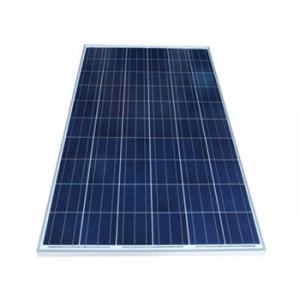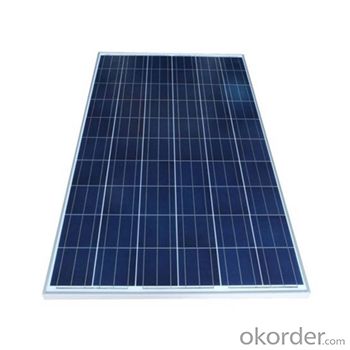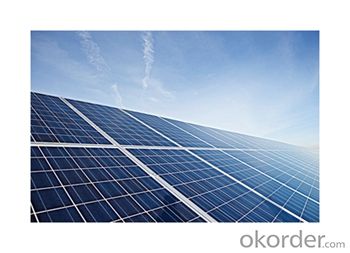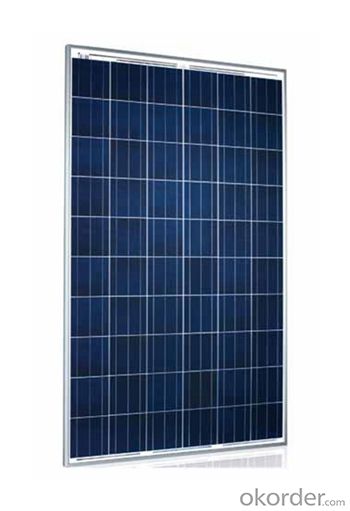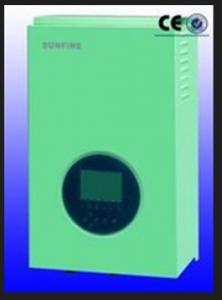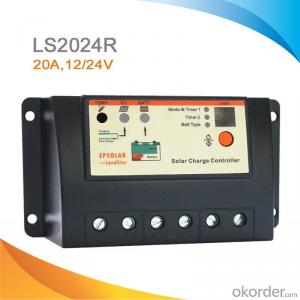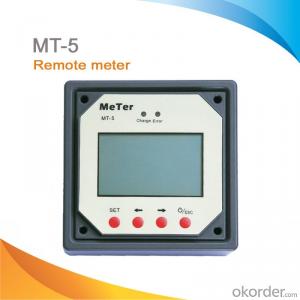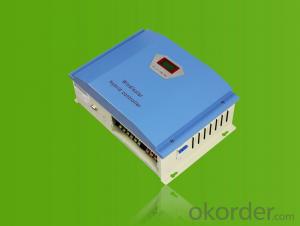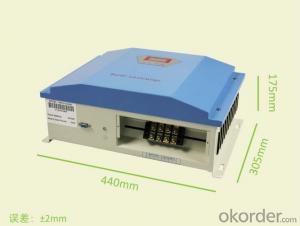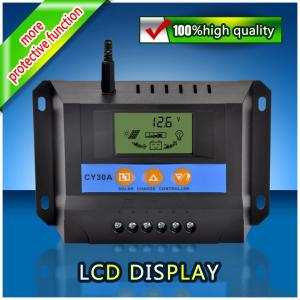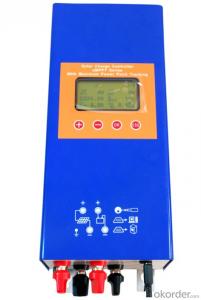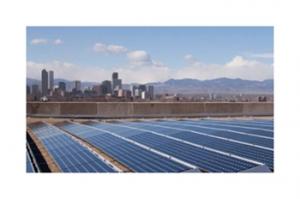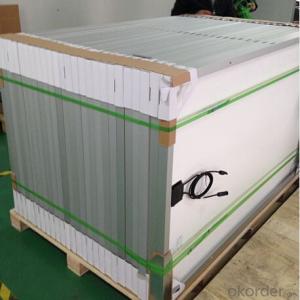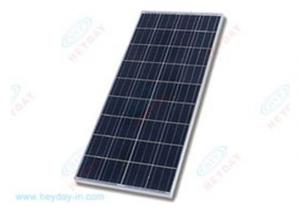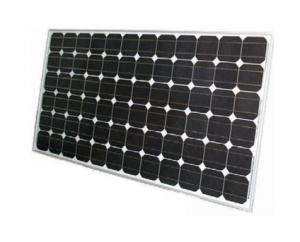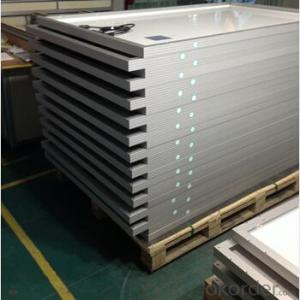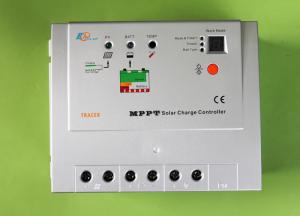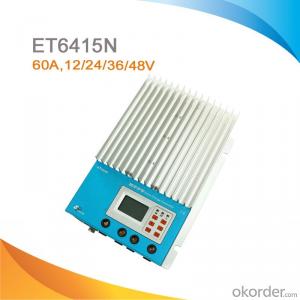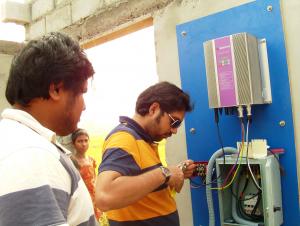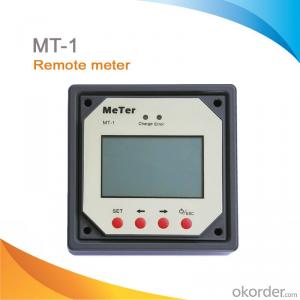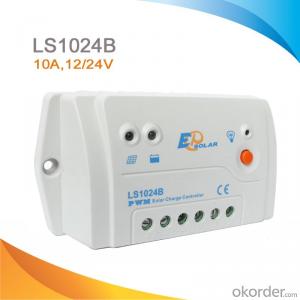Solar Panel Controllers for Sale - Solar Modules Poly-Crystalline 250W 156*156 Module
OKorder Service Pledge
OKorder Financial Service
You Might Also Like
Solar Module Descriptions:
Solar Power Modules (known as Photovoltaics - PV) can generate electricity for your home or business, either as part of a stand-alone solar power system, or for buildings already connected to the local electricity network.
PV systems use the most abundant energy source on the planet, solar radiation, to generate electricity. They are silent, consume no fuel and generate no pollution. They also contribute to the reduction of greenhouse gas emissions; a 2kW PV system on a house will prevent the emission of about 40 tonnes of CO2 during its projected 30 year lifetime. Furthermore, the use of PV will reduce your electricity bills and exposure to fluctuating and steadily rising electricity prices.
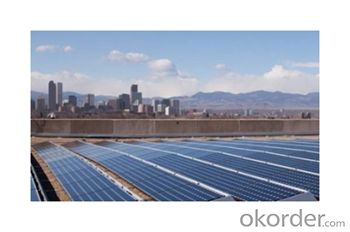
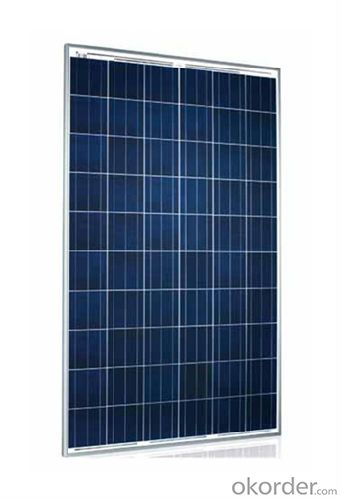
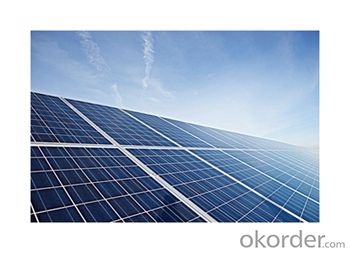
Electrical Characteristics
Max-power (W) | 245 |
Max-Power Voltage (V) | 30.40 |
Max-Power Current (A) | 8.06 |
Open-Circuit Voltage (V) | 37.50 |
Short-Circuit Current (A) | 8.66 |
Mechanical Characteristics
Cable type, Diameter and Length | 4mm2, TUV certified, 1000mm |
Type of Connector | Compatible with MC4 plug |
Arrangement of cells | 6*10 |
Cell Size | 156*156 |
Dimension | 1580*1069*45 |
Weight | 19.5Kg |
Glass, Type and Thickness | High Transmission, Low Iron, Tempered Glass 3.2mm |
Features
Guaranteed positive tolerance 0/+5w ensures power output reliability
Strong aluminum frames module can bear snow loads up to 5400Pa and wind loads up to 2400Pa.
Excellent performance under low light environments (mornings evenings and cloudy days)
12 years for product defects in materials and workmanship and 25 years for 80% of warranted minimum power.
Certifications and standards: IEC 61215.
Manufactured according to International Quality and Environment Management System (ISO9001, ISO14100).
FAQ
Q: What kind of loads can I run on PV?
With a correctly designed PV system you can power almost any electrical load. However, as the load size increases the expense also increases. Loads like hot water heaters, air conditioners, room heaters and electric stoves should be avoided. The added cost of trying to power loads like these is very cost prohibitive. If these loads have to be powered it will be a lot less expensive to change the appliance to use an alternative fuel type like propane.
Q: When do I need a charge controller and why?
The safest way to figure out if you need a charge controller is to take Battery Amp Hour Capacity and divide this by the Solar Panel max. power amp rating. If the quotient is above 200, you don't need a controller. If the number is less than 200 than you need a controller.
For example if you have a 100 amp hour battery and a 10 watt panel, you take 100 and divide it by .6 (600mA) and you get 166.6. Since this is less than 200 you need a charge controller. If you have a five-watt panel in the above example you take 100 divided by .3 (300mA) and you come up with 333.3. Since this is larger than 200 you do not need a charge controller. However you still need a blocking diode, to prevent the battery from discharging to the panel at night. So as a general rule of thumb you don't need a charge controller unless you have more than five watts of solar for every 100-amp hours of battery capacity.
Q: What is PV & how does it work?
PV stands for photovoltaic. Photo = Light and Voltaic = Electricity. A solar cell converts light to electricity.
A solar cell is made of silicon. Computer chips are made of this same material. Basically, when light strikes the surface of a solar cell some of it is absorbed into the silicon. This light energy bumps the electrons loose and causes energy to flow.
By packaging approximately 36 solar cells together a solar panel or a solar module is created. When you have more then one solar panels you create a solar array.
- Q: Can a solar controller be used with a solar-powered beekeeping system?
- Yes, a solar controller can be used with a solar-powered beekeeping system. A solar controller helps regulate and optimize the charging and discharging of the batteries in a solar-powered system. It ensures that the batteries are charged efficiently and protects them from overcharging or discharging. Using a solar controller in a solar-powered beekeeping system can help improve the overall performance and reliability of the system.
- Q: Can a solar controller be used with solar-powered gates?
- Yes, a solar controller can be used with solar-powered gates. A solar controller is an essential component of a solar power system as it regulates the flow of electricity from the solar panels to the gates. It ensures that the energy generated by the solar panels is efficiently utilized and stored in the batteries, which then powers the gates. The solar controller also manages the charging process and protects the batteries from overcharging or discharging, thus prolonging their lifespan. Therefore, a solar controller is necessary for the proper functioning and optimal performance of solar-powered gates.
- Q: Can a solar controller be used with a solar-powered outdoor advertising system?
- Indeed, a solar-powered outdoor advertising system can make use of a solar controller. In fact, the utilization of a solar controller is vital for a solar power system as it effectively manages the transfer of electricity from the solar panels to the advertising system. This essential component optimizes the charging procedure, prevents excessive charging or discharging of the batteries, and safeguards the system against potential harm due to voltage fluctuations. By incorporating a solar controller, the solar-powered outdoor advertising system can fully exploit and leverage the energy generated by the solar panels, guaranteeing consistent and effective functionality.
- Q: What are the key features to consider when purchasing a solar controller?
- When purchasing a solar controller, some key features to consider are the maximum input voltage and current capacity, as it should be compatible with the solar panel's specifications. The type of solar controller, whether it is a PWM (Pulse Width Modulation) or MPPT (Maximum Power Point Tracking), should be considered based on the specific solar system requirements. Additionally, the controller's load output capacity, battery voltage compatibility, and temperature compensation capabilities are important factors to ensure optimal charging and protection for the batteries. The controller should also have necessary safety features like overcharge, over-discharge, and short circuit protection. Finally, it is important to consider the controller's ease of use, reliability, and warranty to make an informed decision.
- Q: What is the maximum charging current that a solar controller can provide?
- The maximum charging current that a solar controller can provide depends on several factors including the specifications of the solar controller itself and the capacity of the battery being charged. Solar controllers typically have a maximum charging current rating, which is the maximum amount of current that it can safely provide to the battery. This rating can vary widely depending on the model and brand of the solar controller. Additionally, the maximum charging current that a solar controller can provide might also be limited by the capacity of the battery being charged. Some batteries have specific charging requirements and limitations, and exceeding these limitations can lead to damage or reduced battery lifespan. It is important to consult the specifications and guidelines of both the solar controller and the battery to determine the maximum charging current that can be safely utilized.
- Q: How does a solar controller prevent damage from reverse polarity connections?
- A solar controller prevents damage from reverse polarity connections by utilizing built-in protection mechanisms that detect and block the flow of current when the positive and negative terminals are incorrectly connected. This prevents any potential damage to the solar panels, batteries, or other connected devices, ensuring the system remains safe and functional.
- Q: How does a solar controller handle the protection against ground faults?
- A solar controller handles protection against ground faults by continuously monitoring the electrical current flow between the solar panels and the battery or grid. If a ground fault occurs, where the current leaks to the ground instead of following the intended path, the controller quickly detects the imbalance and interrupts the circuit to prevent any potential damage or electrical hazards.
- Q: What are the common failure modes of a solar controller?
- The common failure modes of a solar controller include overcharging or undercharging of batteries, voltage spikes or fluctuations, failure to regulate the charge or discharge process, and damaged or malfunctioning components such as diodes, capacitors, or circuit boards.
- Q: Can a solar controller be used with a solar-powered satellite navigation system?
- Utilizing a solar controller in a solar-powered satellite navigation system enables the efficient utilization of the system. The solar controller, also referred to as a charge controller, is responsible for regulating the flow of electricity from the solar panels to the batteries. Its primary function is to ensure the batteries are charged effectively while preventing any potential damage caused by overcharging. The solar panels in this system are utilized to generate electricity by harnessing the energy emitted by the sun. The electricity produced is then stored in batteries, allowing for its usage during periods of insufficient sunlight, such as nighttime or cloudy weather conditions. Imposing a significant role in the system, the solar controller effectively manages the charging process of the batteries. It diligently monitors the voltage and current derived from the solar panels and adapts the charging rate accordingly to prevent the batteries from experiencing any adverse effects caused by overcharging. Moreover, the solar controller optimizes the charging efficiency by maintaining the batteries at their ideal charge level. Through the utilization of a solar controller, the solar-powered satellite navigation system can efficiently exploit the sun's energy. This not only guarantees the proper charging of the batteries but also maximizes the system's overall performance and longevity.
- Q: Can a solar controller be used with solar-powered backpacks?
- Solar-powered backpacks can indeed utilize a solar controller. The primary function of a solar controller is to regulate the voltage and current sourced from the solar panels, ensuring proper battery or device charging. In the context of solar backpacks, employing a solar controller enables efficient energy transfer from the solar panels to either the battery or the electronic devices being charged. This advantageous feature prevents detrimental effects like overcharging, overvoltage, or any other potential issues that may harm the battery or connected devices. Consequently, it is highly advisable to incorporate a solar controller when utilizing solar-powered backpacks to optimize the charging process, as well as guarantee the system's durability and safe operation.
Send your message to us
Solar Panel Controllers for Sale - Solar Modules Poly-Crystalline 250W 156*156 Module
OKorder Service Pledge
OKorder Financial Service
Similar products
Hot products
Hot Searches
Related keywords
